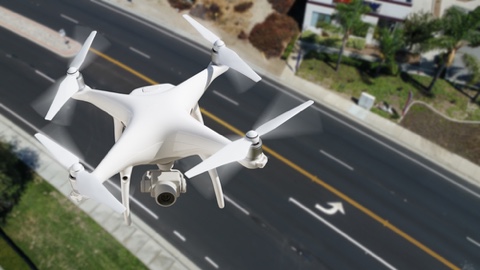
The Federal Aviation Administration (FAA) has estimated that by 2021, the fleet of remotely piloted aircraft (RPA) will reach 4 million. The primary obstacle to integrating routine RPA operations in the National Airspace System (NAS) is the inability of an RPA operator to see and avoid other aircraft. Federal regulation requires pilots to be aware of all other surrounding aircraft — either visually or using on-board instrumentation — and to safely avoid near-misses or collisions.
“Without a human pilot on-board, every drone is by definition incapable of complying with the federal regulation to see and avoid other aircraft,” said Jason Glaneuski, chief of the Air Traffic Management Systems Division at The U.S. Department of Transportation’s Volpe National Transportation Systems Center. “Our team has spent several years tackling this challenge, researching solutions for drone operators that fulfill their operational needs, while also complying with FAA’s rigorous safety standards.”
The Volpe Center, in partnership with the U.S. Air Force (USAF), MITRE, and Raytheon, is developing a Ground-Based-Detect-and-Avoid (GBDAA) capability that uses existing air traffic data from multiple sources to provide RPA operators with a real-time display of aircraft in the surrounding airspace. GBDAA alerts operators to potential conflicts with neighboring aircraft and recommends avoidance maneuvers in the event that a conflict does occur. This would enable RPA operators to detect-and-avoid traffic at an equivalent level of safety as a manned aircraft pilot’s ability to see-and-avoid traffic.
Volpe’s program began as a proof-of-concept demonstration in Gray Butte, California, and grew into a fully functional system at Cannon Air Force Base (AFB) in New Mexico. The Air Force uses GBDAA for its RPA missions at Cannon AFB to ensure separation and conflict avoidance with civilian air traffic. Recently, Volpe has worked with the Air Force and the Ohio Department of Transportation to deploy GBDAA at Springfield-Beckley Municipal Airport (KSGH) to test technologies that may enable safe and efficient flight of small RPAs.
